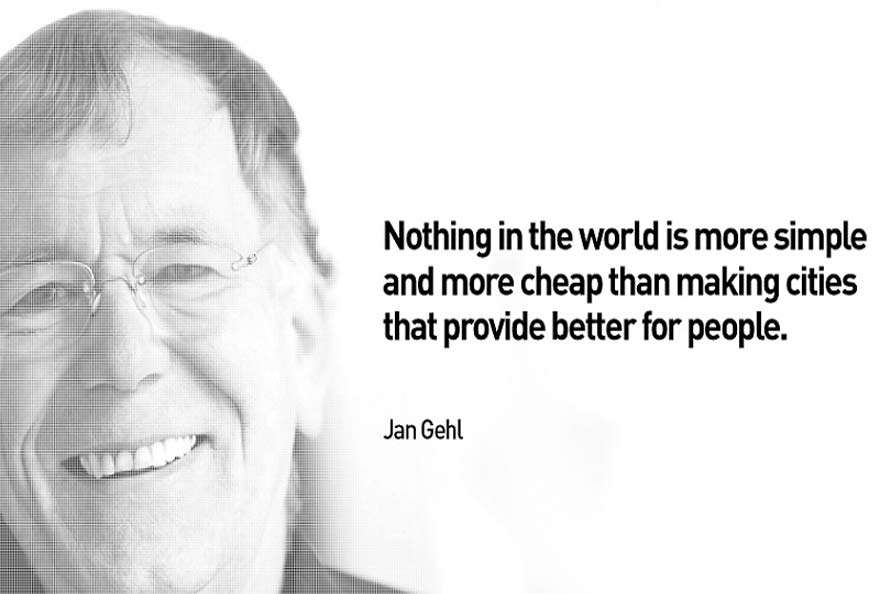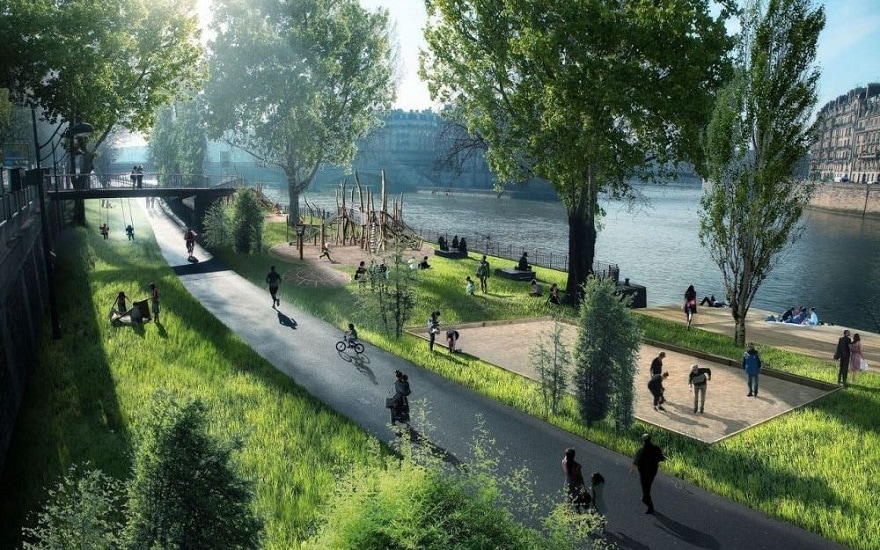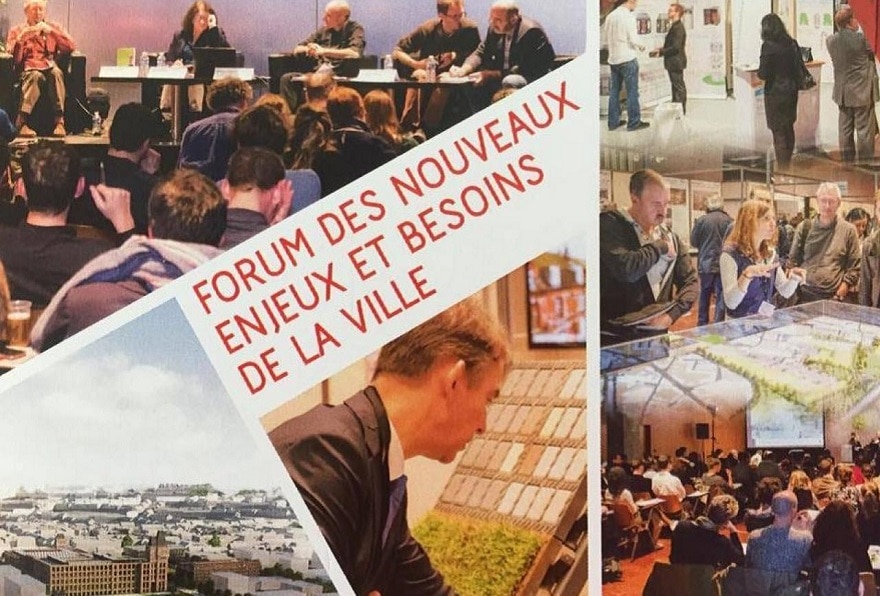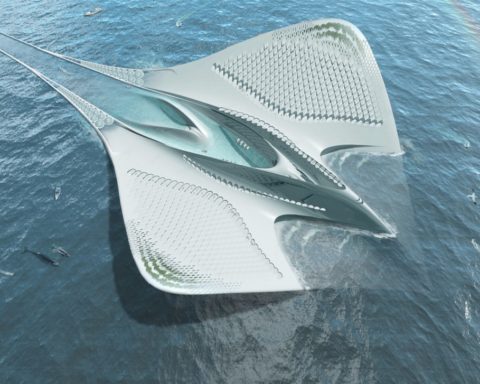Nearly 66% of the population is expected to live in cities in 2050. It is therefore high time to rethink the city. Danish architect and urban planner Jan Gehl has spent his career studying cities and trying to create real living places for their inhabitants. A method in five tips to try to reproduce the ultimate city everywhere.
L’one of the cities closest to urban success, with multiple pedestrian streets, small interconnected alleys everywhere, picturesque canals, and moreover, world-wide acclaimed by millions of tourists every year would be Venice. There is an atmosphere of vibrant human activity, when the small squares are inundated with inhabitants, when the café terraces overflow, when everyone admires the architectural wonders and explores the corners of the city. For Jan Gehl, the Danish architect and urban planner who is developing a lot of research on how urban design can improve the quality of life in our cities, the city of Venice has all the characteristics of a city adapted to the human scale. It is, in a way, the most welcoming ultimate city.

Today, in view of the world population explosion, nearly 66% of the population is expected to live in cities in 2050. According to Jan Gehl, this notion of a welcoming city on a human scale is becoming more important than ever. For efficient, economical and environmental urban development, the human being must be put back at the heart of the city. This may sound simple, but considering the last 60 years, the majority of city development projects have been car-friendly.
A typical example is Brasília, developed around 1950 with the aim of making it a symbol of modernity and progress by the famous architect. Oscar Niemeyer. The urban vision was the opposite of Rio de Janeiro, a new city without a colonial past, without classical and baroque architecture, without shantytowns, destined to host a glittering modern architecture for the Brazilian bureaucracy.

Unfortunately, this city does not have all the ingredients to be one, and beyond the influence of the administrative and financial functions, the inhabitants go into weekly exile to São Paulo, Rio or the hinterland for their leisure time or for the pleasant living environment. It is the fact of being a city that was not designed on a human scale that poses a problem. "Without street life, even the ambassadors are bored in Brasília. "criticized Professor Richard Burdett from the London School of Economics and Political Science, who also served on the Architecture and Urban Planning Council for the London 2012 Olympic Games.
"What we need to do now is to build liveable, healthy and sustainable cities." advocates Gehl. A subject that he develops further in his books "Cities for People" and "Life Between Buildings", and which he details in the documentary "The Human Scale". His research and theories have inspired many generations of urban planners who are campaigning for a city on a human scale.
1. Stop the construction of "cheap petrol architecture".
For Gehl, two of the most important issues facing city planners are climate change and public health. " For 50 years we've been shaping cities so that people are almost forced to live sitting in their cars all day, at work, at home, " he explains. "This has led to serious health problems, such as obesity and related risks. »
He attributes the cause of the problem to cheap petrol, which promotes mobility in the car. "These factors have allowed developed countries to build large suburbs all around urban centres, without realizing that one day this will create problems. They all originally thought they would offer a better quality of life, " " he says. "
"I call this the architecture for cheap gazoline - 'architecture for cheap gazoline' - because as soon as prices rise due to a lack of supply or too high a market price, tensions arise. I recently read a study in a medical journal - The Lancet - which detailed a study explaining that people living in the suburbs had a lower life expectancy than people living in the city centres. This is due to a higher proportion of walking for daily commuting, less stress and less exposure to road traffic pollution. When the price of petrol is very low, the negative aspects are more easily forgotten. »
2. Making public life the driving force of urban planning
In 2009, Copenhagen drew up a forward-looking plan called "A Metropolis for its inhabitants", based on the work of Jan Gehl. "The city council has decided through a strategic plan to make Copenhagen the best city in the world. It is interesting to dwell on some of the key arguments developed: we need to walk more; we need to spend more time in public spaces; we need to leave our private sphere more often. »
Gehl explains the consequences: "It improves life in society, it's good for the climate, and it's good for our health. If everyone spent more time in public spaces, the city would become safer, more exciting, livelier and more interesting for everyone. This is one of the key elements of democracy in our societies: making sure that citizens meet each other throughout their day, and that this diversity is crossed outside the walls and screens. »

Giving access to all available urban spaces is part of the solutions for a more pleasant city, and it is not the Experimental Urban Bathing Laboratory that will contradict Jan Gehl! / © Jan Gehl
3. Designing multi-sensory experiences
"We're bipedal animals that evolution has developed for a slow rate of travel, around 4.5km/h." explains Gehl when he talks about our senses. "A good city is a city built around the human body and its senses. We must optimize our ability to move around and experience our senses in a controlled environment. For many years, we have broken these natural laws for the well-being of the automobile at the expense of human well-being. Compare the experience of walking between Venice and Brasília, and you will see which one is most conducive to the use of your human senses. »
4. Making transport fairer
Social equity is a great challenge for our contemporary cities, which are running out of land and housing to meet the demand, and are facing considerable speculation. The poorest are constantly being driven away from urban centres and workplaces. Increasing access to efficient, affordable public transport that is an alternative to the car is essential to promote equality.
"As it is today, the further away from urban centres, the higher the share of poor people increases. The further away from urban centres, the higher the share of expenditure allocated to transport. In addition to the financial expenses induced by private cars, there is also the loss of time.. Gehl concluded "Where housing prices are the highest, you will find the wealthiest people, who ultimately spend the least on transportation. By its very nature, this spatialization therefore conveys a strong inequality that needs to be corrected. »
5. Ban the car
"It's no secret that the good old days of the automobile are behind us." says Gehl. "In 2009, we saw the global peak in car use, which has since declined. While the private car was a good means of transport in the cities of the mid-20th century, it is proving unsuitable for the megacities of several million inhabitants in the 21st century. The idea that everyone on earth could have a car is dead. »
Designing urban spaces for the car is no longer an option for megacities that are already at saturation point. Jan Gehl takes the example of Singapore, "There's not enough room for roads on the narrow island that houses the city. The density is such that you can get around everywhere faster on foot or by bike. »
In conclusion, he adds, "As far as I know, there are more innovations and new solutions developing in the major cities of emerging countries than in cities built entirely for the car, the most convincing example of which would be Detroit. Optimization solutions, such as Uber or connected cars, will not solve the major problems of lack of space and the need for pleasant public spaces. They only seek to fill the gaps in an already outdated model, but they do not seek to improve urban quality. These solutions are good for the car industry, but not for the citizens of cities. »
This article is a translation of "5 Rules For Designing Great Cities, From Denmark's Star Urbanist" by Diana Budds published on Fastcodesign.com - July 2016












